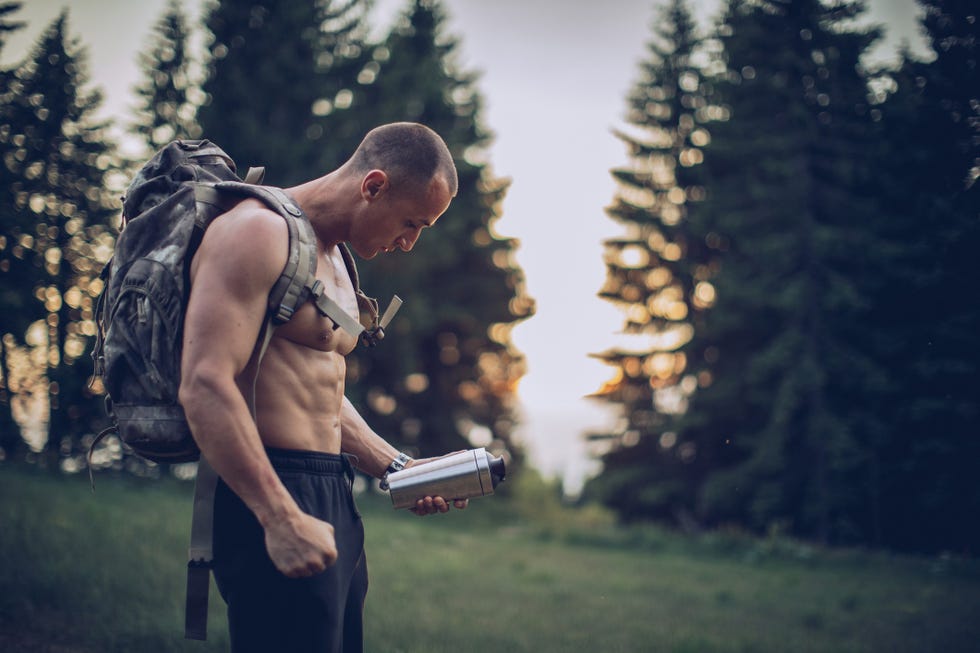WEIGHTED WALKING, sometimes referred to as ‘rucking’ has garnered a lot of attention in the last few years, and for good reason. There are a multitude of muscle building benefits ranging from improved bone density to an increase in calorie burn. While the majority don a weighted vest or weighted rucksack to bolster their cardio, many look to weighted walking due the fat loss perks.
Now, new evidence supports this, with one study indicating that wearing a heavy weighted vest could lead to an additional three pounds of fat loss over three weeks compared to carrying less weight, whilst also maintaining muscle mass.
The study
Published in The Lancet, the study’s researchers wanted to investigate the effects of additional weight on fat loss. Specifically, the researchers wanted to examine the effects on the hormone leptin during the intervention, which had previously only been studied in rodents.
They mention, ‘We have recently published evidence that there is a loading dependent homeostatic regulation of body weight and fat mass, named the gravitostat, supported by the finding that increased loading using weight capsules reversibly decreased body weight and fat mass in rodents,’ The aim of their study was to investigate if artificially increased weight loading would decrease body weight in obese humans also.
The methods
A total of 69 healthy men and women between 18 and 70 years old with mild obesity were randomly assigned in a 1:1 ratio to receive either low load or high load treatment.
- The heavy loading treatment consisted of a weight vest with a weight corresponding to 11% of the participants’s body weight
- The light loading treatment consisted of a weight vest corresponding to 1% of the participants’s body weight.
Both groups had weight vests from the same manufacturer with identical appearance. The participants were asked to use the weight vest for at least eight hours per day for three weeks without deviating more than 20% from these outlines. The participants recorded daily the time using the weight vest in total and the time using the weight vest standing. They were encouraged to continue with their normal lifestyle activities except for the extra amount they spent standing each day.
Measurements were taken by bioelectrical impedance analysis before and after the intervention. Their food intake was measured using weekly dietary food questionnaires.
The results
The researchers found that over three weeks:
- The bodyweight loss was significant in the high load group (1.68%) but not in the low load group.
- Analysis of the absolute change in body weight showed that the high load treatment reduced the body weight by an average of 1.31 kg (2.9 lbs) compared to the low load treatment across both genders.
The conclusion
The researchers conclude that: ‘The main finding was that high load treatment reduced body weight compared to low load treatment and that this was the result of a reduction in fat mass while fat-free mass was unaffected. Our interpretation of these results is that there is a weight loading dependent homeostatic regulation of body weight, the gravitostat, also in humans.’
They continue to explain these results as being due to increased loading leading to increased energy expenditure to provide energy for an inevitable increase in physical workload. This would especially occur when moving upward to resist gravity. This mechanism could be regarded as a part of the gravitostat as it senses the body weight and adjusts the body mass.
To conclude the researchers note that ‘Increased weight loading reduces body weight and fat mass in obese subjects in a similar way as previously shown in obese rodents. These findings demonstrate that there is a weight loading dependent homeostatic regulation of body weight, supporting the gravitostat hypothesis also in humans.’

South_agency//Getty Images















